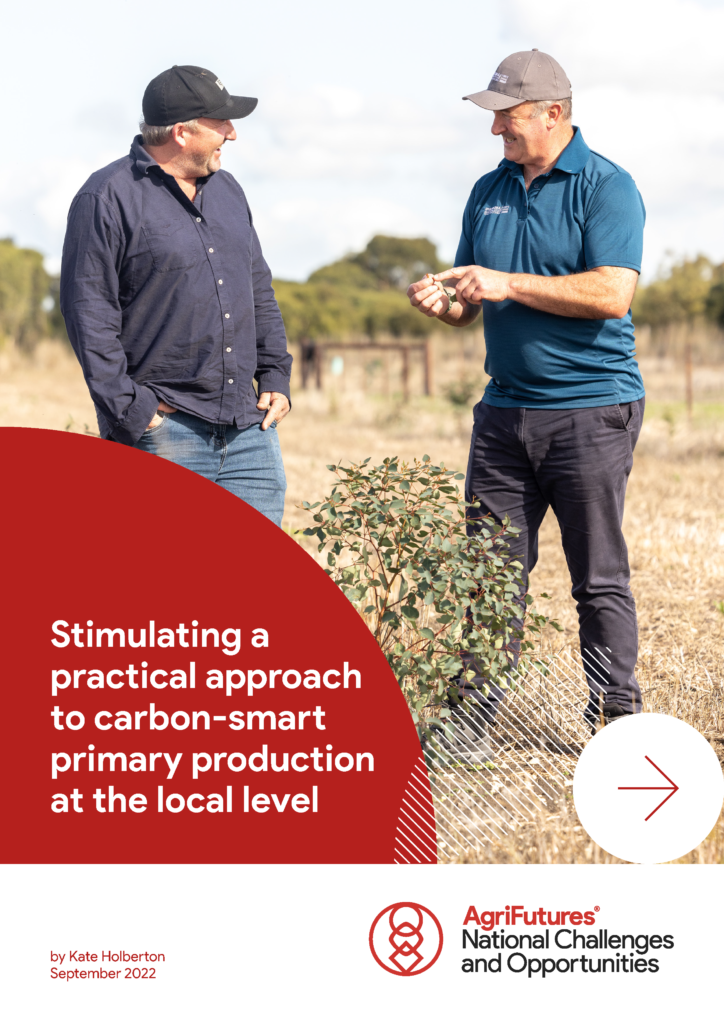A farmer's handbook to on-farm carbon management
Australia’s rural industries and businesses have potential to participate in carbon markets that are rapidly being developed around the world. International top 500 companies are...
 NATIONAL CHALLENGES AND OPPORTUNITIES
NATIONAL CHALLENGES AND OPPORTUNITIES 
52 pages
Published: 22 Jun 2023
Author(s): Kate Holberton
ISBN: 978-1-76053-368-7
Download report PDF
DownloadPurchase a hard copy - AUD $50
A favourable climate, rainfall and underground water supply for irrigation makes the Limestone Coast region of South Australia a significant primary production region. Future climate change will impact these resources and, as a result, prompt changes to farming systems and practices. As the need for direct action on climate change continues, the land sector will play a pivotal role in reducing greenhouse gas emissions and sequestration of carbon into vegetation and soil.
The aim of this project was to increase the number of primary producers who view carbon management as relevant to their business, as well as the Limestone Coast region’s environment and production systems. The long-term objective is to improve economic, environmental and social conditions in the region through increased adoption of carbon management.
The project identified primary producers are interested in learning more about soil carbon and the link between soil health and landscape health, carbon neutrality, and carbon accounting but are overwhelmed by the volume of information available. They require practical, common sense and place-based methods to manage carbon in their farming systems.
Against this backdrop, the project developed the Limestone Coast Carbon Smart Land Management Roadmap and a suite of education resources to address these knowledge gaps and provide a guide for the region to adopt carbon management techniques for different farming systems amid a changing climate across different soil types. These techniques include carbon sequestration in both the soil and vegetation, and emissions reduction and avoidance. The roadmap and the education resources offer guidance on practical actions and potential risks specifically relevant to the conditions and farming systems in the region.
Additionally, analysis of soil benchmark survey data collected from 1990-2013 estimated the potential to store an additional 30 million tonnes of soil carbon in the 0-30 cm depth in the Upper and Lower Limestone Coast region. This equates to an approximate increase in soil organic carbon in the surface 0-10 cm by 0.4 to 1.1%.